Artiles
Open Access
Article
27 August 2025Statistical Analysis of GSR Particles Morphometry Using the CART Method
According to ASTM E1588-20, gunshot residue (GSR) particles can be unequivocally identified through chemical and morphometric analysis using scanning electron microscopy coupled with energy-dispersive X-ray spectroscopy (SEM-EDS), the gold standard technique for GSR detection. Recent studies have reported the presence of characteristic GSR particles—containing lead (Pb), barium (Ba), and antimony (Sb)—on vehicle occupants exposed to airbag deployment, underscoring the need for complementary analytical approaches. While elemental composition remains the primary criterion for GSR identification, morphometric analysis enhances the ability to differentiate GSR from other environmental particles. Furthermore, detailed characterization of GSR particle morphology may assist in determining the type of firearm used in a shooting incident. This study systematically analyzed characteristic GSR particles originating from four Brazilian-manufactured ammunition, establishing an initial framework for differentiating between two classes of firearms (short and long) based on morphometric features using the Classification and Regression Tree (CART) method. CART is well-suited for scenarios where interpretability and ease of implementation are priorities. Two short firearms—Taurus G2C pistol (0.40 caliber) and Glock G23 pistol (9 mm caliber) and two long firearms—Colt M16A2 rifle (5.56 mm caliber) and IMBEL FAL rifle (7.62 mm caliber) were tested: Ammunition types included CBC 0.40 S&W CSCV 160 gr, CBC 9 mm copper bullet (batch BNC10), CBC 5.56 mm AXO46 (batch A0142946), and CBC 7.62 × 51 mm Common. Morphometric analysis revealed distinct variations in characteristic GSR particle profiles across different ammunition calibers. A new four-category classification system for characteristic GSR particles was developed, with 57% identified as regular spheroids. Using CART analysis, a statistical model achieved 76% accuracy in distinguishing between short and long firearms based on morphometric parameters, particularly circularity and Feret diameter. Further research with expanded datasets and alternative predictive methods is recommended to enhance model performance and generalizability. These findings reinforce the potential of morphometric classification as a complementary tool in forensic ballistics.
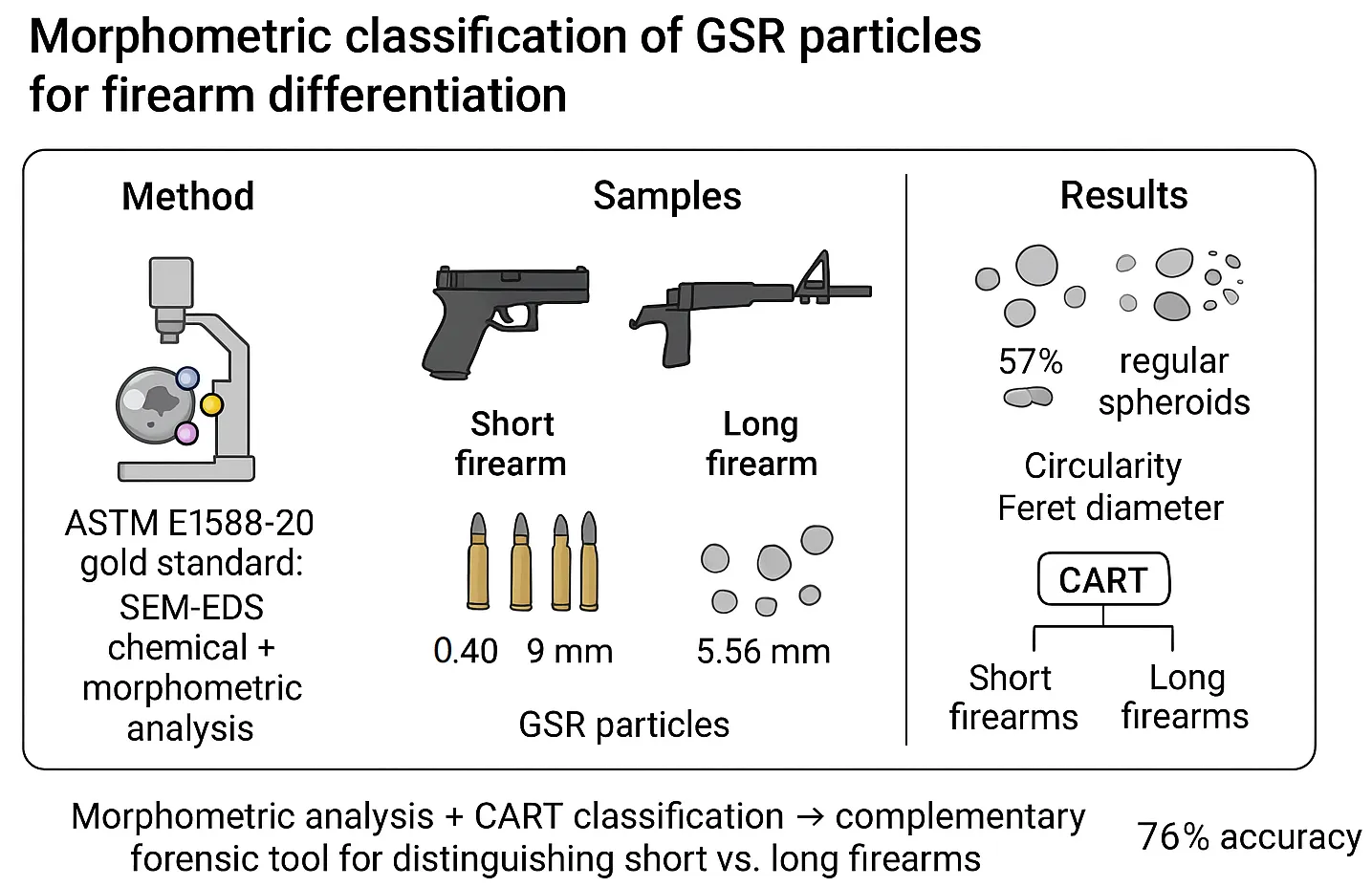
Open Access
Article
26 August 2025Hybrid Encoder–Decoder Model for Ultra-Short-Term Prediction of Wind Farm Power
The ability to ensure safe and economic operation of power grids is challenging because of the large-scale integration of wind power as a result of its intermittent and fluctuating nature. Accurate wind power prediction is critical to overcome these concerns. This study proposed a novel hybrid encoder–decoder model by combining bidirectional gated recurrent unit, multi-head attention mechanism, and ensemble technique for multi-step ultra-short-term power prediction of wind farms. The bidirectional gated recurrent unit accurately details the complex temporal dependency of input sequence information in the encoder and outputs the encoded vector. To focus on features that contribute more to the output, two types of multi-head attention mechanism, including self-attention and cross-attention, were used in the decoder to decode the encoded vector and obtain the forecast wind power sequence. Furthermore, an ensemble technique was used to integrate forecast results from various individual predictors, which reduced the uncertainty of individual prediction results and improved predictive accuracy. The input data included historical information from the wind farm and future information from numerical weather prediction. The forecast model was validated using actual data, and results showed that it achieved superior accuracy and stability compared with other existing models in four multi-step prediction scenarios (1-, 2-, 3-, and 4-h prediction).
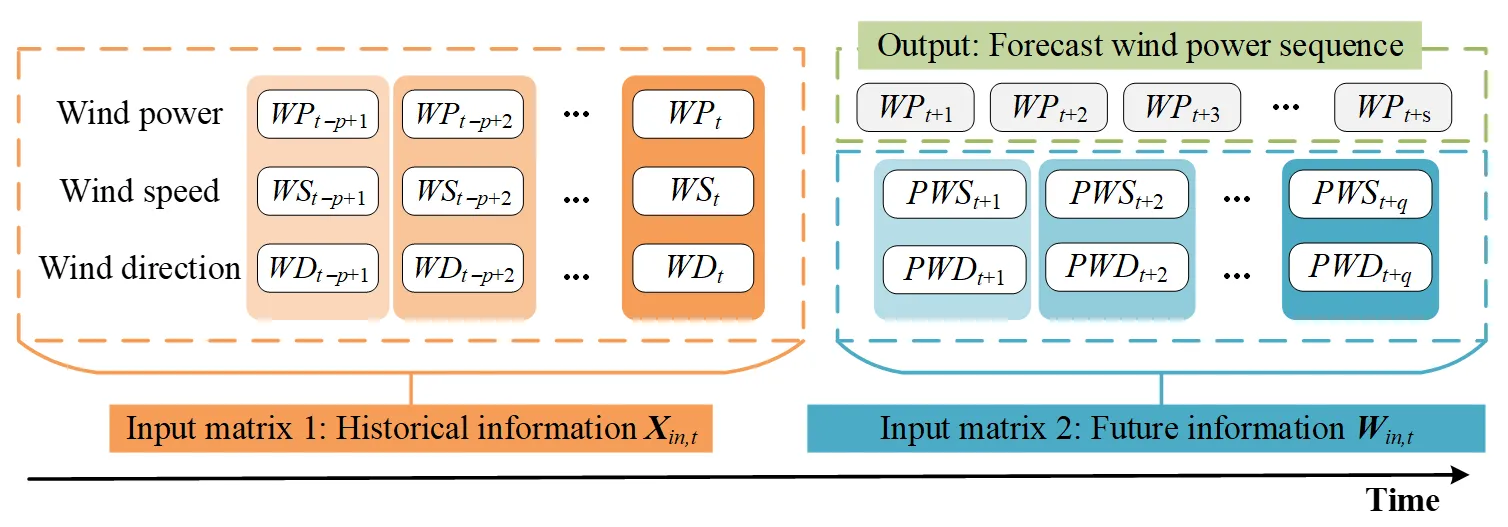
Open Access
Perspective
26 August 2025Expanding Private Capital Investment in Universities to Biodiversity Conservation
Biodiversity is essential for human well-being, and serves as the green engine for education, science, technology and health. China’s prosperous private entrepreneurs have established hundreds of private colleges and universities with several newcomers positioned as world-class research universities. Unfortunately, biodiversity conservation education and researches appear overlooked in these institutions. Universities, particularly the top-tier universities, serve as critical hubs where talent, knowledge, and technology concentrate. Private capital’s flexible management framework and rapid response to emerging academic disciplines enable universities, enterprises, and markets to collaborate effectively in developing tools and equipment for biodiversity assessment and monitoring. Expanding huge private capital investment in universities to biodiversity conservation could spur broader investment in ecological products in the future, while would also offer an opportunity for the universities to achieve their ambitions.
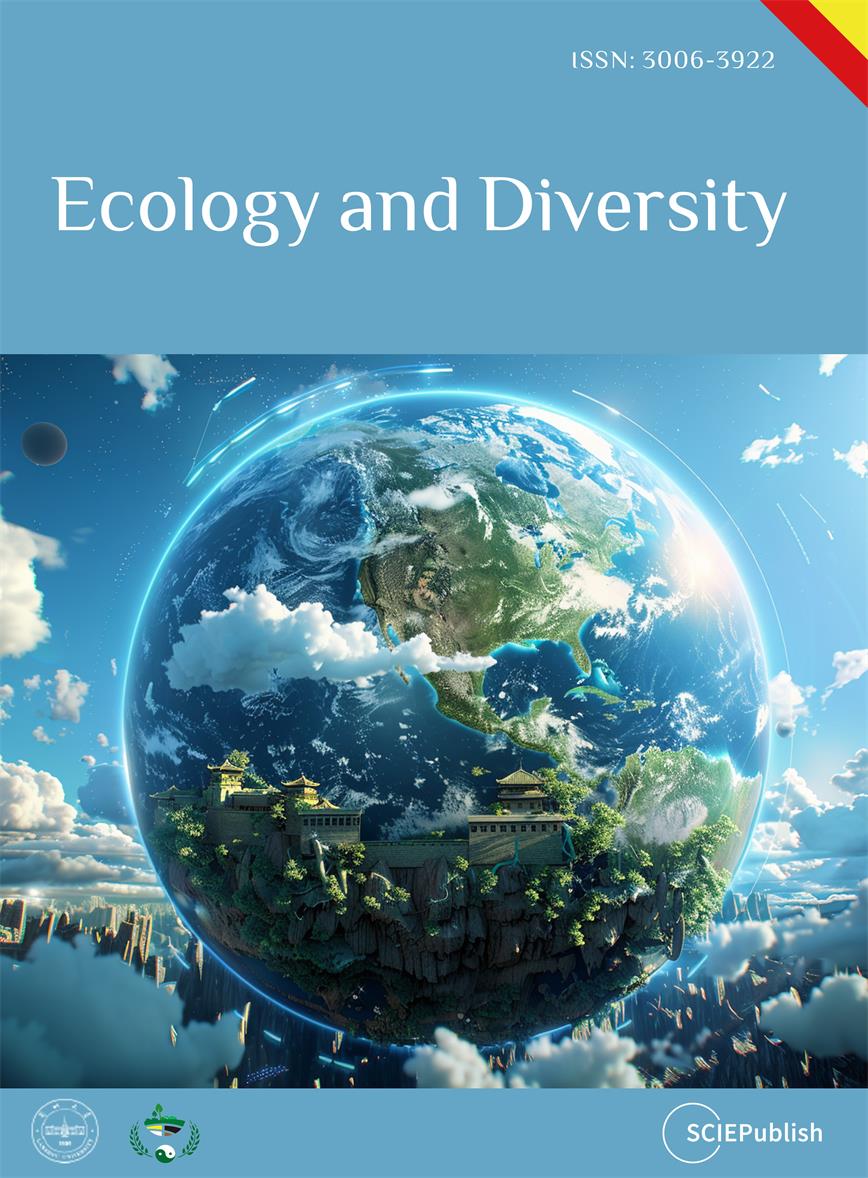
Open Access
Article
25 August 2025Feature Selection Technique Using Multiple Linear Regression for Accurate Electricity Demand Forecasting
The rising power demand, driven by population growth, technological innovations, and the advent of smart cities, necessitates precise forecasting to ensure efficient energy distribution and align supply with demand. This paper presents a novel methodology for predicting short-term power consumption through machine learning approaches, specifically employing multiple linear regression for feature selection. In this study, two models are implemented and compared: Support Vector Regression (SVR) and Long-Short-Term Memory (LSTM). Exploratory data analysis was used to discover the relationships and associations between variables. It reveals that temperature, humidity, time of day, and season are major determinants of electricity use. The results indicate that the LSTM model surpasses Support Vector Regression (SVR) in terms of accuracy and precision. By incorporating multiple linear regression (MLR) for feature selection, the performance of both models improved, with precision gains of 29.1% for SVR and 18.19% for LSTM. Removing extraneous elements, such as wind speed and diffuse solar radiation, enhanced the models’ efficiency and interpretability, allowing for a focus on the most significant factors. The study’s findings underscore the need to optimize feature selection to enhance forecast accuracy and streamline models. This method provides critical insights for enhancing energy management strategies and facilitating sustainable power distribution in light of rising global energy demand.
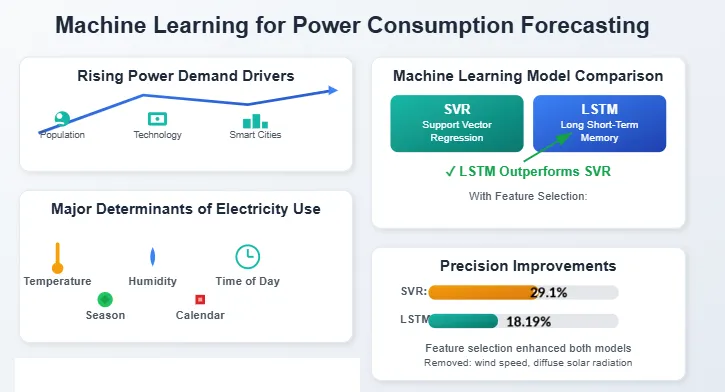
Open Access
Review
22 August 2025The Recyclability of Wind Turbine Blade Material, Manufacturing Process, and Recycling Technology
As wind energy continues to be deployed at a significantly increasing rate, the number of decommissioned wind turbines is expected to increase accordingly. To improve material efficiency, a large amount of waste requires appropriate identification and recycling, particularly the composite materials used in wind turbine blades (WTB). This study focuses on two life cycle stages, manufacturing and the decommissioning stage, which contribute most to the waste generation of WTB. This study investigates the material efficiency factors in WTB and organises fragmental information in manufacturing waste management, focusing on the recycling factor and quantifying the recyclability of wind turbine blade material regarding the different recycling technologies. This study fills the gap in existing research by evaluating recycling methods for specified carbon fibre-reinforced polymers (CFRPs) and glass fibre-reinforced polymers (GFRPs) using a revised recyclability index. Additionally, innovative sustainable materials and recent composite recycling studies have also been incorporated into the quantification and evaluation to update the current progress. The current source of WTB post-production waste, the corresponding disposal method, and opportunities were also reviewed and identified. The findings quantified recyclability and revealed that the recyclability of WTB materials varies significantly depending on the specific composite type and the recycling method employed. Furthermore, the calculated recyclability, combined with other factors such as global warming potential (GWP), cost, and technology readiness level (TRL), is discussed, along with the potential for improving material efficiency by selecting future material recycling technology and effective manufacturing waste management.
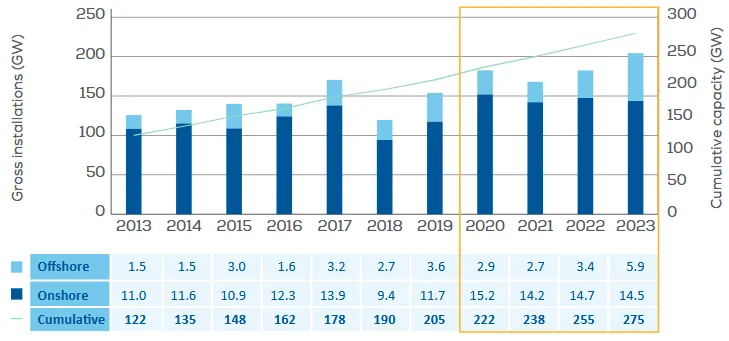
Open Access
Opinion
22 August 2025Are Probiotics a Panacea for All Diseases? A Scientific Opinion
Probiotics have gained widespread attention for their potential health benefits, particularly in promoting gut health and modulating the immune system. This article critically examines whether probiotics can be a universal remedy for all diseases, as often claimed in scientific literature and popular media. The objective is to evaluate the current scientific evidence regarding the efficacy of probiotics in preventing and treating various medical conditions, including gastrointestinal disorders, metabolic syndromes, allergies, and mental health issues. While some studies suggest promising outcomes in specific contexts, the evidence remains inconsistent and often limited to specific strains and conditions. Importantly, this review highlights that probiotics are not a one-size-fits-all solution and their effects can vary widely depending on individual physiology, dosage, and microbial composition. The article also addresses safety concerns, regulatory challenges, and the need for more rigorous, large-scale clinical trials. By analyzing existing data and expert opinions, this work aims to separate fact from hype and provide a balanced perspective on probiotics’ true potential and limitations in modern medicine.

Open Access
Case Report
22 August 2025Root Cause Identification of Vibration and Wear Due to Strainer Obstruction in Hydrocarbon Processing Compressors
This study examines the root causes of vibration and wear in centrifugal compressors, particularly emphasising strainer obstruction in hydrocarbon processing environments. Strainer fouling is primarily driven by deposits from inlet gas compositions and deviations in operating conditions, which restrict flow, increase vibration, and accelerate component degradation. A combined methodology was applied to investigate these issues, including baroscopic inspection of compressor internals, chemical analysis of deposited materials, and evaluation of operational records against design specifications. Maintenance histories and strainer cleaning frequencies were also reviewed to establish links between performance decline and operating practices. The findings show that chemical cleaning is the most effective and cost-efficient solution, outperforming high-pressure water jet cleaning and full compressor overhauls by minimising downtime, restoring flow dynamics, and improving mechanical stability. Successful implementation across multiple compressors confirmed its scalability and reliability. This research validates chemical cleaning as a preferred maintenance strategy, delivering significant operational and economic benefits while extending compressor service life.

Open Access
Review
20 August 2025On the Utility of Nailfold Capillaroscopy in Detecting the Effects of Fibrinaloid Microclots in Diseases Involving Blood Stasis
A variety of chronic, inflammatory vascular and autoimmune diseases are accompanied by fibrinaloid microclots. Such diseases reflect endothelial dysfunction and may be detected using a ‘structural’ assay in the form of the fluorescence microscopic or flow ‘clotometry’ analysis of suitably stained platelet-poor plasma. Their amyloid nature and the presence of anti-fibrinolytic molecules therein make the fibrinaloid microclots comparatively resistant to the normal processes of clot degradation. By inhibiting the free flow of blood, the many effects of fibrinaloid microclots include those causing hypoxia, oxidative stress, and ‘blood stasis’ in the microcirculation. Nailfold capillaroscopy is an established observational technique (with both ‘structural’ and ‘functional’ elements) for assessing the microcirculation, and it is thus of interest to establish whether it too demonstrates changes when these syndromes are diagnosed. All diseases in which both methods have been applied show both the presence of fibrinaloid microclots and changes in capillary properties, indicating the complementary value of the structural and functional assays. This also suggests the potential value of nailfold capillaroscopy in a variety of other diseases involving coagulopathies or a deficient microcirculation, which has been little studied to date.

Open Access
Article
20 August 2025Mitochondrial Lon Peptidase 1 Controls Diaphragm and Lung Development in a Context-Dependent Manner
Congenital Diaphragmatic Hernia (CDH) is a rare neonatal disorder causing diaphragmatic defects and cardiopulmonary hypoplasia, traditionally attributed to mechanical compression from organ herniation. However, emerging evidence suggests genetic mutations may independently impair lung development, prompting debate over CDH etiology. Here, we investigated the requirement of mitochondrial function guarded by LON peptidase 1 (Lonp1), a CDH risk gene, in either diaphragm or lung development. Lonp1 loss in skeletal muscles of the diaphragm led to its thinning and membranization, recapitulating the pathology of sac-type CDH. On the other hand, lung-specific inactivation caused severe hypoplasia with defective branching morphogenesis, independent of diaphragm anomalies. Molecularly, Lonp1 disruption dysregulated key transcription factors and signaling pathways known to be critical for early lung development. Our findings here revealed that mitochondrial defects contribute to the pathogenesis of CDH in an organ and cell type specific manner, opening new avenues for drug and therapeutic development.

Open Access
Article
19 August 2025Inventory of Ant Fauna in the Influence Area of a Small Hydropower Plant in the State of Paraná, Brazil
The construction of hydroelectric dams for power generation causes environmental alterations and ecosystem restructuring in directly and indirectly affected areas. This study aimed to survey the ant fauna in the indirect area of influence of a small hydroelectric plant located in Mangueirinha, Paraná State, Brazil. Seven sampling campaigns were conducted, two before and five during the project’s implementation, using pitfall traps as the sampling method. A total of 72 ant species were recorded, belonging to 26 genera and six subfamilies. Species richness and abundance did not differ significantly between the pre-implementation and implementation phases. The Chao1 estimator indicated that actual species richness may be approximately 7.6% higher than observed. These findings contribute to understanding ant biodiversity in areas subject to land-use change in Paraná State. The results highlight the value of using insect species richness and abundance, particularly of bioindicator groups such as ants, for environmental impact monitoring.
